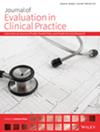Pregnant Women's Breast Milk and Breastfeeding Myths and Associated Factors: A Case of Refugee and Non-Refugee Women
Abstract
Background
This study was conducted to determine the prevalence of breast milk and breastfeeding myths during pregnancy among Turkish, Turkish–Romani, and Syrian pregnant women and compare the similarities and differences between the countries.
Methods and Study Design
The sample of the study consisted of 330 pregnant women who presented to a hospital. Data were collected with a ‘Descriptive Information Form’ and ‘Breast Milk and Breastfeeding Myths Form’ developed by the researchers. The Breast Milk and Breastfeeding Myths Form consists of items expressing common beliefs about breast milk and breastfeeding, and each item is evaluated with one of the following three options: ‘yes,’ ‘no,’ and ‘no idea.’ The forms were applied face to face to the pregnant women who came to the outpatient clinic. The data were evaluated on the SPSS (14.0) software package, and chi-square and advanced analyses were used for the statistical analysis.
Results
Turkish, Turkish-Romani, and Syrian pregnant women who made up the study sample had similar socio-demographic characteristics. It was determined that there were intercultural differences in 28 out of 30 myths evaluated by Turkish, Turkish-Romani, and Syrian mothers regarding breast milk and breastfeeding.
Conclusion
It was determined that Turkish pregnant women had different myths about breast milk and breastfeeding from Syrian and Turkish-Romani pregnant women. It can be said that false beliefs and attitudes about breast milk and breastfeeding are common.

 求助内容:
求助内容: 应助结果提醒方式:
应助结果提醒方式:


